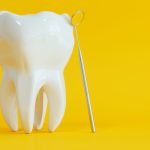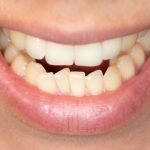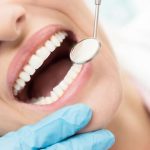Say Goodbye to White Lines on Teeth Near Gums: A Comprehensive Guide

A bright and healthy smile is one of the most attractive features of a person. However, it can be quite disheartening to see white lines on teeth near gums, which can significantly impact one’s self-confidence. These white lines are usually caused by a loss of enamel, which is the protective outer layer of the teeth. The good news is that there are several ways to prevent and reduce these white lines, and this comprehensive guide will cover all the essential information you need to know. In this guide, we will discuss the causes of white lines on teeth near gums, the preventive measures you can take, and the treatment options available. We will also explore the role of diet and lifestyle in maintaining good oral health. Additionally, we will provide you with some tips and tricks to keep your teeth and gums healthy, ensuring that you maintain a bright and confident smile. So, whether you’re dealing with white lines on your teeth or simply interested in maintaining good oral health, this guide has got you covered. Let’s dive in!
White lines on teeth near gums are a common dental issue that many people experience. These lines are often referred to as \enamel hypoplasia,\ and they occur when the enamel on the teeth near the gums is thinner than the rest of the tooth. This can be caused by various factors, including genetics, poor oral hygiene, excessive fluoride consumption, or trauma to the tooth. While enamel hypoplasia is not necessarily harmful, it can make the affected teeth more susceptible to cavities and other dental problems. Fortunately, there are several treatment options available, including dental bonding, veneers, and enamel microabrasion, that can help restore the appearance and health of your teeth.
White lines on teeth near gums can be unsightly and negatively impact your overall dental health. These lines are often a sign of demineralization or erosion of the tooth enamel. If left untreated, this can lead to more serious dental issues such as cavities and tooth decay. Additionally, these lines can affect the appearance of your smile and cause self-consciousness. Removing white lines can be achieved through proper dental hygiene and regular visits to the dentist. This can help restore the health and beauty of your teeth and improve your overall confidence. Don’t let white lines on your teeth hold you back from showing off your best smile.
Causes of White Lines on Teeth Near Gums
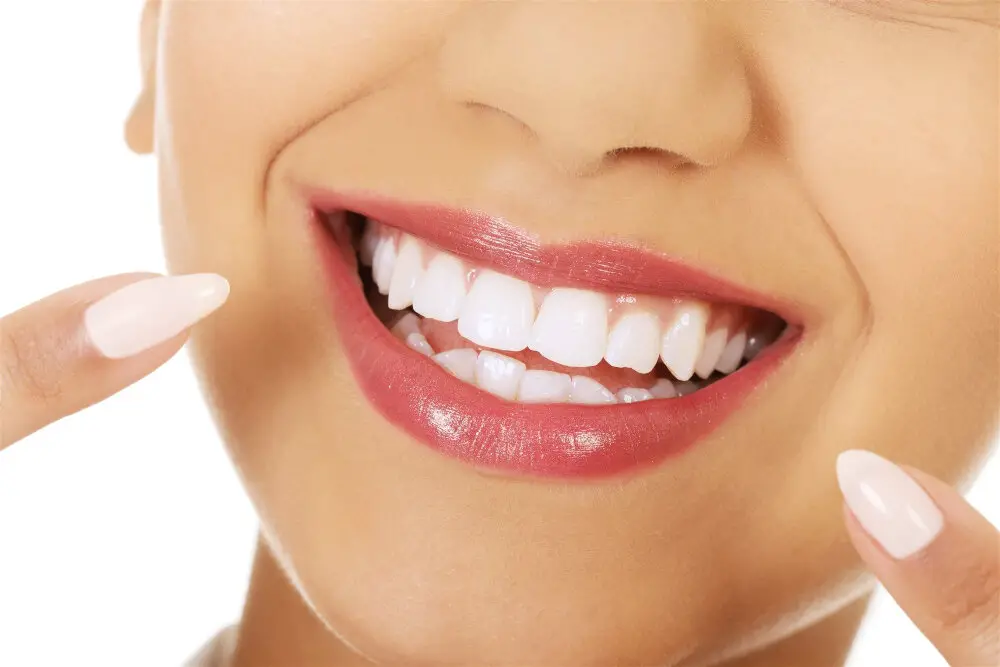
White lines on teeth near gums are a common dental issue that can affect anyone, regardless of age or gender. There are several possible causes of these white lines, including poor oral hygiene, enamel erosion, and excessive fluoride intake. Poor oral hygiene can lead to the buildup of plaque and bacteria on teeth, which can cause white lines to form near the gums. Enamel erosion, which is often caused by acidic foods and drinks, can also result in white lines on teeth. Finally, excessive fluoride intake can lead to a condition called fluorosis, which can cause white lines to form on teeth. In addition to these causes, there are several other factors that can contribute to the development of white lines on teeth near gums. These include grinding or clenching of teeth, smoking, and certain medications. If left untreated, white lines on teeth near gums can lead to more serious dental issues, such as tooth decay and gum disease. Therefore, it is crucial to identify the underlying cause of the white lines and seek appropriate treatment to prevent further damage to the teeth and gums.
Enamel erosion is a common dental problem that occurs when the hard outer layer of the teeth, known as enamel, wears away gradually. This can be caused by a variety of factors such as acidic foods and drinks, certain medications, and teeth grinding. As the enamel wears away, the teeth become more susceptible to tooth decay, sensitivity, and discoloration. If left untreated, enamel erosion can even lead to tooth loss. However, there are several preventative measures that can be taken to protect the enamel, such as avoiding acidic foods and drinks, using a soft-bristled toothbrush, and seeking treatment for teeth grinding or acid reflux. By taking proper care of your teeth and seeking regular dental check-ups, you can help prevent enamel erosion and maintain a healthy, beautiful smile.
Poor oral hygiene can lead to a host of dental problems, including the appearance of white lines on teeth near the gums. These lines are caused by a buildup of plaque, a sticky film of bacteria that forms on teeth and can harden into tartar if not removed regularly. Tartar can cause gum inflammation and periodontal disease, which can ultimately lead to tooth loss. In addition to brushing twice a day and flossing daily, it is important to visit the dentist regularly for cleanings and check-ups. A healthy diet that is low in sugar and high in calcium can also help maintain good oral health.
Acidic foods and drinks can be detrimental to dental health, causing erosion of the enamel and leading to white lines on teeth near the gums. Foods such as citrus fruits, pickles, and tomatoes, as well as drinks like soda and sports drinks, contain high levels of acid that can wear away at the protective layer of teeth. Additionally, acid reflux and gastrointestinal issues can also contribute to an acidic environment in the mouth. It’s important to limit consumption of acidic foods and drinks, and to rinse with water or chew sugar-free gum after consuming them to help neutralize the acid. Regular dental check-ups and professional cleanings can also help prevent and address any damage caused by acidic substances.
Bruxism, commonly known as teeth grinding, is a dental condition that occurs when an individual unconsciously clenches or grinds their teeth, often during sleep. It is a prevalent condition that can cause significant damage to the teeth, including wear and tear, fractures, and even tooth loss. Bruxism can be caused by a variety of factors, including stress, anxiety, medication side effects, and certain medical conditions. If left untreated, bruxism can result in a range of complications, including headaches, jaw pain, and even hearing loss. Therefore, it is essential to seek professional dental care to diagnose and treat bruxism before it leads to more severe dental problems.
Prevention of White Lines on Teeth Near Gums
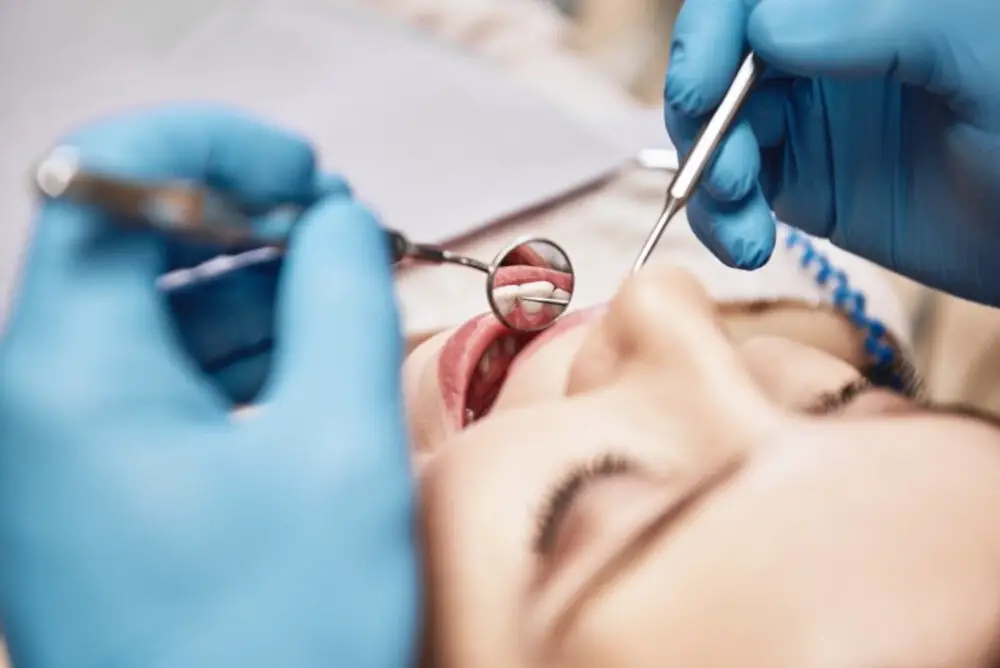
White lines on teeth near gums are a common dental problem that can be unsightly and cause embarrassment. Fortunately, there are several ways to prevent the formation of white lines on teeth and keep your smile looking its best. One of the most important preventative measures is to maintain good oral hygiene. This means brushing your teeth twice a day, flossing daily, and visiting your dentist regularly for checkups and cleanings. By removing plaque and bacteria from your teeth and gums, you can prevent the buildup of white lines and other dental problems. Another key factor in preventing white lines on teeth near gums is to avoid acidic foods and drinks. Acidic foods and drinks can erode the enamel on your teeth, which can lead to discoloration and the formation of white lines. Some common acidic foods and drinks to avoid include citrus fruits, soda, and sports drinks. If you do consume acidic foods or drinks, make sure to rinse your mouth with water afterwards to help neutralize the acid. Additionally, using a toothpaste that contains fluoride can help strengthen your tooth enamel and protect against the formation of white lines on teeth near gums.
Brushing your teeth twice a day with fluoride toothpaste is an essential habit for maintaining proper oral hygiene. Fluoride toothpaste helps in strengthening the enamel, which is the outer layer of the teeth. Brushing teeth twice a day minimizes the accumulation of plaque and bacteria that cause tooth decay and gum diseases. It also helps to get rid of bad breath, making your mouth feel fresh and clean. It’s not enough to only brush your teeth once a day, as it allows harmful bacteria to accumulate on the teeth and gums, leading to white lines on teeth near gums and other dental problems. So, make sure to brush your teeth twice a day with fluoride toothpaste to keep your teeth healthy and shining.
Flossing daily is an essential part of maintaining good oral hygiene and preventing white lines on teeth near gums. These lines, also known as enamel hypoplasia, occur due to a lack of minerals in the tooth enamel, which can be caused by poor dental hygiene. Flossing removes food particles and plaque from between teeth and along the gum line, preventing the buildup of harmful bacteria that can lead to tooth decay and gum disease. Regular flossing also helps to stimulate the gums, promoting healthy blood flow and reducing inflammation. So, make sure to floss daily to keep your teeth and gums healthy and free from those unsightly white lines.
Acidic foods and drinks can cause erosion of the tooth enamel, leading to white lines on teeth near gums. Therefore, it is crucial to avoid high levels of acidic substances in the diet. Citrus fruits, soda, wine, and certain types of vinegar are some examples of acidic foods and drinks that should be limited or avoided. One can also opt for less acidic alternatives like water, milk, and low-acid fruits such as bananas, melons, and mangoes. It is also recommended to consume acidic foods alongside other foods to decrease the amount of acid that remains in contact with teeth. By being mindful of one’s diet and reducing acidic intake, individuals can help protect their teeth from erosion and maintain a healthy, bright smile.
Teeth grinding, also known as bruxism, is a common problem that affects many people during their sleep. If left untreated, it can cause significant damage to the teeth, gums, and jaw muscles. Wearing a mouthguard is an effective solution to prevent teeth grinding. It is a custom-fitted device that is worn over the teeth during sleep to cushion the teeth and absorb the force of grinding. Mouthguards also help to reposition the jaw to alleviate muscle tension and reduce the risk of developing temporomandibular joint (TMJ) disorders. By using a mouthguard, you can protect your teeth from damage and prevent the unsightly white lines that can form near the gums due to excessive grinding.
Treatment Options for White Lines on Teeth Near Gums
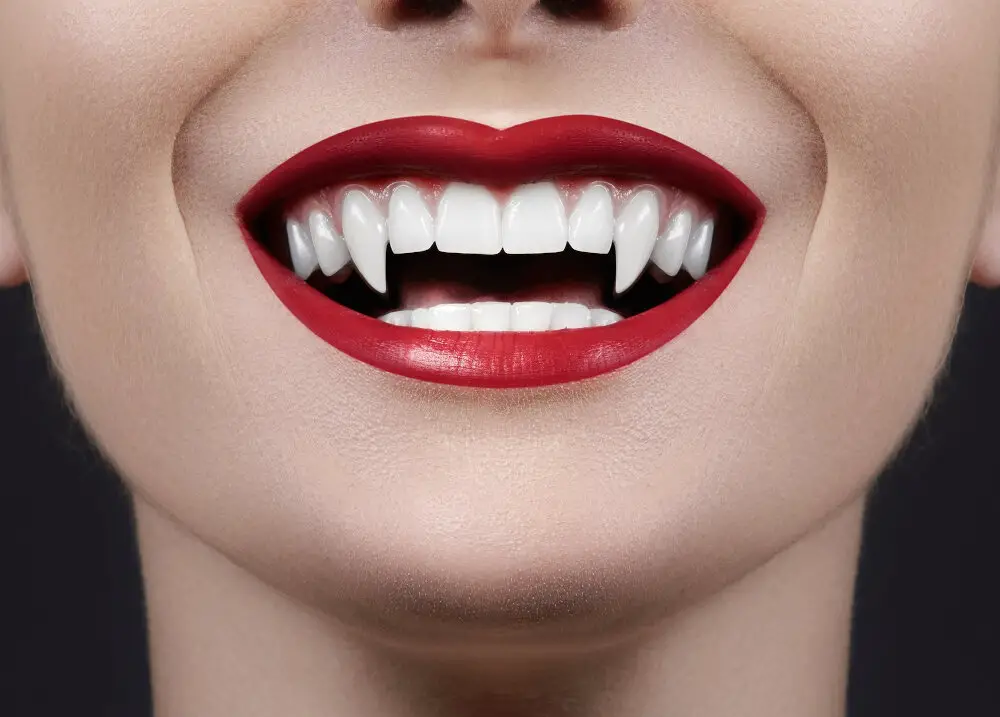
White lines on teeth near gums can be a cause of concern as they can affect the appearance of your smile. These lines are often caused by a condition called enamel hypoplasia, which is a result of the enamel not developing properly during childhood. If you notice white lines on your teeth near your gums, it is important to consult a dentist to determine the cause and explore treatment options. One treatment option for white lines on teeth near gums is dental bonding. During this procedure, a tooth-colored resin is applied to the affected area and then hardened with a special light. This helps to fill in the gaps and smooth out the appearance of the white lines. Another option is porcelain veneers, which are custom-made shells that are bonded to the front of the teeth. Veneers can be used to cover up white lines and improve the appearance of your smile. It is important to note that these treatments are cosmetic and do not address the underlying cause of the white lines. Therefore, it is important to maintain good oral hygiene and visit your dentist regularly to prevent further damage to your teeth. In addition to dental treatments, there are also home remedies that can help to reduce the appearance of white lines on teeth near gums. These include oil pulling, which involves swishing coconut or sesame oil in your mouth for several minutes before spitting it out. Another option is to use a whitening toothpaste that contains baking soda or hydrogen peroxide, which can help to remove surface stains and improve the appearance of your teeth. However, it is important to note that these remedies may not be effective for everyone and it is best to consult with your dentist before trying any home remedies.
Dental bonding is a cosmetic dental procedure that involves the application of a tooth-colored resin material to the surface of a tooth. This material is then sculpted and shaped to match the natural contours of the tooth. Bonding is often used to repair teeth that are chipped, cracked, or discolored. It can also be used to fill in gaps between teeth or to reshape teeth that are misaligned or uneven. Dental bonding is a quick and painless procedure that can be completed in just one visit to the dentist. It is a cost-effective alternative to more extensive cosmetic dental procedures, such as veneers or crowns. With proper care, dental bonding can last for several years, making it a popular choice for patients looking to improve the appearance of their teeth.
Porcelain veneers are a popular cosmetic dentistry treatment for improving the appearance of teeth. These thin shells of porcelain are custom-made to fit over the front surface of teeth to mask imperfections such as discoloration, chips, or gaps. They are highly durable and can last for many years with proper care and maintenance. Porcelain veneers can also be used to correct uneven or misaligned teeth, creating a more uniform and aesthetically pleasing smile. The process of getting porcelain veneers typically involves several appointments, including a consultation to discuss treatment goals and design the veneers, as well as preparation and placement appointments. While porcelain veneers can be a significant investment, they offer a long-lasting and natural-looking solution for achieving a beautiful smile.
Teeth whitening is a cosmetic procedure that involves removing stains and discoloration from the surface of teeth to improve their appearance. This procedure is becoming increasingly popular due to its ability to enhance the natural beauty of teeth, boost confidence, and improve overall oral hygiene. There are various methods of teeth whitening, including in-office treatments, at-home treatments, and natural remedies. In-office treatments involve the use of advanced technology and are performed by a dental professional. At-home treatments, on the other hand, can be done with over-the-counter products or custom-made kits provided by a dentist. Natural remedies such as baking soda and hydrogen peroxide are also effective but may take longer to produce noticeable results. Regardless of the method chosen, teeth whitening is a safe and effective way to achieve a brighter, healthier smile.
Enamel microabrasion is a cosmetic dental treatment that involves the removal of a thin layer of enamel from the teeth to eliminate white lines, stains, and discolorations near the gum line. The procedure is non-invasive, safe, and effective in restoring the natural appearance of teeth. The process begins with the application of an acidic gel on the affected area, which helps to dissolve the outer layer of enamel. The dentist then uses a microabrasion machine to gently remove the damaged enamel and smoothen the surface of the tooth. The result is a brighter, healthier-looking smile that boosts confidence and self-esteem. Enamel microabrasion is an excellent option for patients who wish to improve the aesthetics of their teeth without undergoing invasive procedures.
Home Remedies for White Lines on Teeth Near Gums
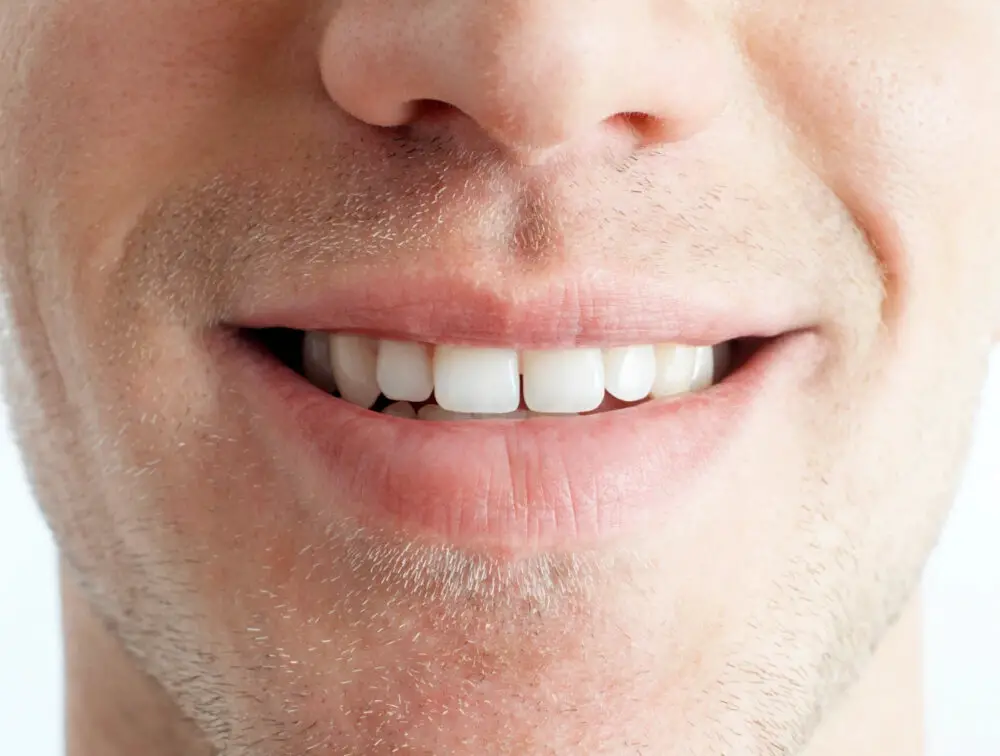
White lines on teeth near gums are a common dental issue that can be caused by various factors such as poor oral hygiene, excessive fluoride intake, enamel erosion, or gum disease. If you’re dealing with these unsightly white lines, there are several home remedies that you can try to improve the appearance of your teeth. One effective home remedy for white lines on teeth near gums is oil pulling. This ancient Ayurvedic technique involves swishing a tablespoon of oil (such as coconut or sesame oil) in your mouth for 15-20 minutes, then spitting it out. Oil pulling can help remove bacteria and toxins from your mouth, which can contribute to white lines. Another natural remedy is baking soda, which can help whiten teeth and remove surface stains. Mix a small amount of baking soda with water to form a paste, then brush your teeth with it for a few minutes. Just be careful not to use baking soda too often, as it can be abrasive and damage your enamel over time. In addition to these remedies, it’s important to practice good oral hygiene habits like brushing twice a day, flossing daily, and using an antiseptic mouthwash. You should also avoid sugary and acidic foods and drinks that can erode your enamel and contribute to white lines. By following these tips and trying out some of these home remedies, you can say goodbye to white lines on your teeth near gums and enjoy a brighter, healthier smile.
Oil pulling is an ancient Indian practice that involves swishing oil around your mouth for 20 minutes to improve oral health. The most commonly used oil for oil pulling is coconut oil due to its antibacterial and anti-inflammatory properties. The process of oil pulling involves the oil seeping into the crevices and gaps in the teeth and gums, pulling out any bacteria and toxins that may be present. This can help to reduce plaque buildup, bad breath, and even whiten teeth. While there is limited scientific evidence to support its effectiveness, many people swear by the benefits of oil pulling and consider it an important part of their oral hygiene routine.
Baking soda paste is a simple yet effective solution to remove white lines on teeth near gums, which are often caused by excessive brushing or gum recession. The paste is made by mixing baking soda with water to create a viscous consistency. Baking soda, also known as sodium bicarbonate, has natural abrasive properties that help remove surface stains on teeth. Additionally, it neutralizes acids in the mouth, which can cause tooth decay and bad breath. However, it’s important to note that excessive use of baking soda can damage tooth enamel, so it should be used sparingly and in conjunction with regular brushing and flossing. Overall, baking soda paste is a natural and affordable solution to help improve the appearance and health of teeth.
Apple cider vinegar rinse is a natural and effective way to combat white lines on teeth near gums. This rinse helps balance the pH level in the mouth and remove stains caused by plaque buildup. The acetic acid in apple cider vinegar also kills bacteria and reduces inflammation, which can improve overall oral health. To make the rinse, mix equal parts water and apple cider vinegar and swish it around in your mouth for 30 seconds to a minute before spitting it out. Be sure to rinse your mouth with water afterward to prevent any damage to tooth enamel. Incorporating this simple yet powerful rinse into your oral hygiene routine can help prevent and treat white lines on teeth near gums, leaving you with a healthier and brighter smile.
Coconut oil and turmeric paste have become a popular natural remedy for teeth whitening. The combination of these two ingredients is said to be effective in removing stains and discoloration on teeth near the gums. Coconut oil contains lauric acid, which has antimicrobial properties that can help fight bacteria and prevent plaque buildup. Turmeric, on the other hand, has natural bleaching properties that can help brighten teeth. Together, they create a powerful paste that can help whiten teeth and improve overall oral health. While there is limited scientific research on the effectiveness of this remedy, many people have reported positive results. However, it is important to use this paste in moderation as turmeric can stain clothing and surfaces.
White lines on teeth near the gums are caused by a variety of factors, including poor oral hygiene, enamel erosion, grinding or clenching teeth, and acidic foods and drinks. To prevent these white lines, it is crucial to maintain proper oral hygiene by brushing and flossing regularly, using a fluoride toothpaste, and avoiding sugary and acidic foods and drinks. It is also important to wear a mouthguard if you grind or clench your teeth. Enamel erosion can be prevented by limiting exposure to acidic foods and drinks, using a straw when drinking them, and rinsing your mouth with water after consuming them. By following these prevention methods, you can say goodbye to white lines on your teeth near the gums and maintain a healthy and beautiful smile.
Seeking professional treatment for severe cases of white lines on teeth near gums is crucial for maintaining good oral health. These lines may be the result of enamel demineralization, which can lead to tooth decay and other serious dental problems if left untreated. A dentist can provide a thorough diagnosis and recommend the appropriate treatment, such as fluoride therapy or dental restorations. Additionally, a dentist can address any underlying causes of the white lines, such as poor oral hygiene or a high sugar diet, and provide guidance on how to prevent future occurrences. By seeking professional treatment, individuals can not only improve the appearance of their teeth but also prevent more serious dental issues in the future.
Achieving a healthy, white smile is not just about cosmetic purposes, it’s also about taking care of our overall dental health. It’s never too late to start taking action towards this goal, and the benefits are endless. Not only will a bright smile boost your confidence and self-esteem, but it can also improve your oral hygiene and prevent potential dental problems. So don’t let fear or procrastination hold you back from achieving the smile of your dreams. Start by implementing healthy dental habits, such as brushing and flossing regularly, avoiding sugary and acidic foods, and visiting your dentist for regular check-ups. With determination and dedication, a healthy, white smile is within reach.
Conclusion

In conclusion, maintaining healthy teeth and gums is essential for overall oral health. White lines on teeth near gums can be a pesky problem but with proper dental care, they can be prevented and treated effectively. Regular brushing, flossing, and dental check-ups, along with a balanced diet, can go a long way in preventing white lines and other dental issues. However, if you do notice white lines developing, it is important to consult with a dental professional to identify the underlying cause and receive the appropriate treatment. With the right approach, you can say goodbye to those unsightly white lines and enjoy a healthy, beautiful smile for years to come.
